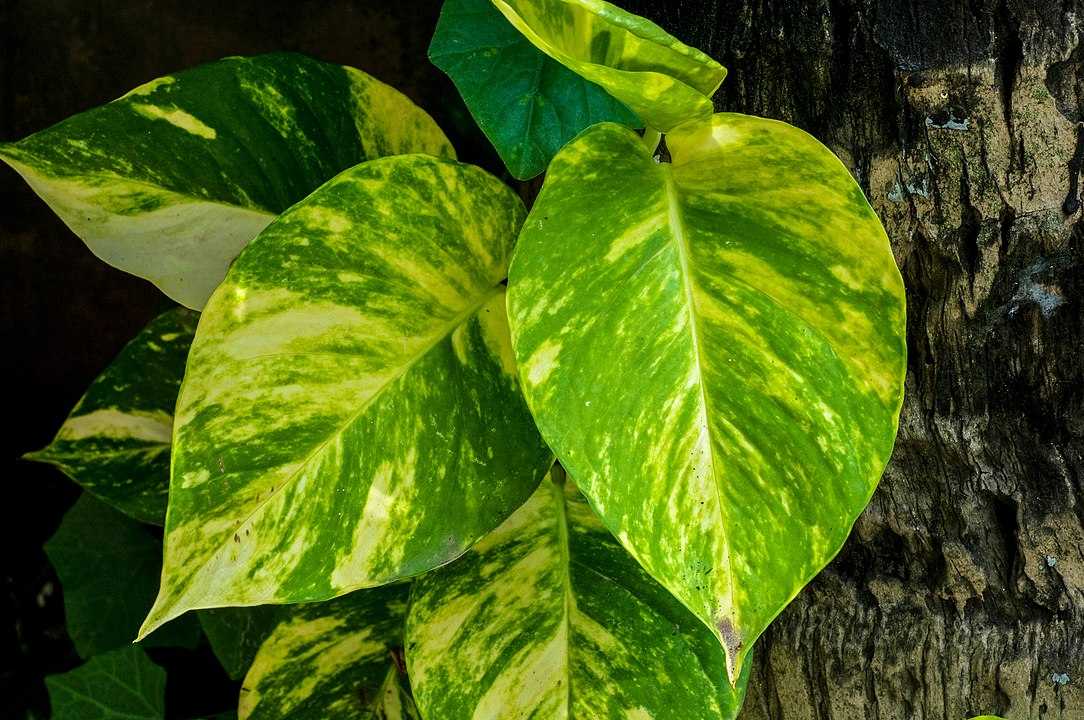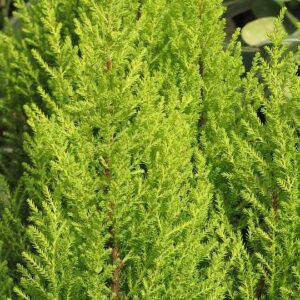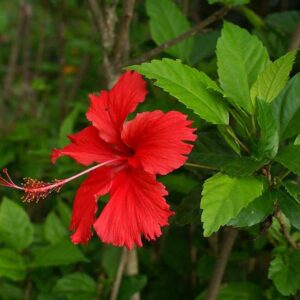Introduction
The money plant, also known as Devil’s Ivy, is a popular houseplant that is native to the tropical forests of Southeast Asia. Its botanical name is Epipremnum aureum. The money plant is known for its attractive, glossy green leaves that can grow up to 30 inches long.
It is a versatile plant that can be grown both indoors and outdoors, depending on the climate and growing conditions. In tropical and subtropical regions, the money plant can be grown outdoors in partial shade or full sun, depending on the intensity of the sunlight. It can also be grown as a climbing plant along a trellis, fence, or wall.
For a stunning indoor garden, consider pairing your Money plant with a Pink Syngonium plant or a Golden Cypress plant.
The Pink Syngonium plant has striking pink foliage that will contrast beautifully with the Money plant’s green leaves. The Golden Cypress plant has bright yellow foliage that will add a pop of color and provide a contrasting backdrop for the Money plant’s trailing vines.
Click on the headings to read more!
Types
There are several different types of money plants, each with its unique characteristics. Here are some of the most popular types of this plant:
Golden Pothos:
This is the most popular and widely known variety of money plant. It has heart-shaped leaves that are green and yellow, with a trailing habit that makes it perfect for hanging baskets.
Marble Queen Pothos:
This variety has leaves that are green and white, with a marble-like pattern. It also has a trailing habit and is a great choice for hanging baskets.
Jade Pothos:
This variety has leaves that are solid green and are slightly smaller than the leaves of the Golden Pothos. It has a trailing habit and can be grown in a hanging basket or trained to climb up a trellis or wall.
Neon Pothos:
This variety has bright, neon green leaves that are smaller than the leaves of the Golden Pothos. It is a great choice for adding a pop of color to your home.
Manjula Pothos:
This is a variegated variety of money plant with green and white leaves that have a unique, wavy shape. It is a slow-growing plant and is more compact than other varieties, making it a great choice for smaller spaces.
Snow Queen Pothos:
This variety has leaves that are green and white, with a speckled pattern. It is a great choice for brightening up a room with its variegated leaves.
Benefits
Air purifying:
Money plant is known to be an effective air purifier, helping to remove harmful pollutants such as formaldehyde, benzene, and xylene from the air.
Feng Shui benefits:
According to Feng Shui, it can bring good luck, prosperity, and positive energy into the home.
Easy to care for:
Money plant is a low-maintenance plant that can thrive in a variety of indoor conditions. It is relatively easy to care for, making it a popular choice for beginners and experienced plant enthusiasts alike.
Aesthetically pleasing:
It is a beautiful plant with attractive, glossy green leaves that can add a touch of greenery to any space.
Disadvantages
Toxic to pets:
According to the ASPCA, money plant is toxic to dogs and cats. Ingesting the plant can cause problems including oral irritation, intense burning and irritation of the mouth, and difficulty swallowing. It is important to keep money plant out of reach of pets to avoid potential health issues.
Overgrowth:
It can grow quickly and can become invasive if not pruned regularly. This can cause it to take over other plants or grow too large for its space.
Pests and diseases:
Money plant can be susceptible to pests such as spider mites and mealybugs, as well as diseases such as root rot and leaf spot.
Allergic reactions:
Some people may be allergic to the sap or pollen of the plant, causing skin irritation or respiratory problems.
Vastu Guidelines: Placement and Direction
According to Vastu Shastra, the placement of the money plant can affect its ability to bring wealth and prosperity into the home. Here are some guidelines:
East or North:
Money plant should ideally be placed in the east or north direction of the house. This is believed to help attract positive energy and good luck into the home.
Avoid South:
It is generally not recommended to plant it in the south direction of the house, as it is believed to attract negative energy and financial loss.
Right location:
The money plant should be placed in a location where it can receive bright, indirect light. However, it should not be exposed to direct sunlight, as this can be too intense for the plant.
Use a green pot:
When planting money plant, it is recommended to use a green pot. Green is believed to be an auspicious color in Vastu and can help enhance the plant’s ability to attract wealth and prosperity.
Keep it healthy:
It is important to keep the plant healthy and well-cared for, as a healthy plant is believed to attract positive energy and good luck.
Plant care
Watering:
Money plant likes to be kept consistently moist, but not soaking wet. Water it if the top of soil feels dry to the touch. Avoid overwatering your plant, as this may cause root rot.
Soil:
It can grow in a variety of soils, but it prefers well-draining soil that is rich in organic matter. Use a good quality potting mix or a mixture of soil, sand, and compost.
Light:
Money plant prefers bright, indirect light, but it can also tolerate lower light conditions. Avoid exposing your plant to direct sunlight, which might scorch the leaves.
Temperature and Humidity:
It can tolerate a wide range of temperatures and humidity levels, but it prefers warm and humid conditions. It’s recommended to keep the plant away from drafts or air conditioning vents.
Fertilizer:
Money plant can benefit from occasional fertilization. Use a balanced liquid fertilizer once a month during the growing season (spring and summer) and reduce frequency during the dormant season (fall and winter).
Pruning:
Money plant can grow quickly and can become leggy if not pruned regularly. Pinch off the tips of the stems to encourage bushier growth and remove any dead or yellowing leaves.
Growing Money Plant in Water
You can easily grow money plant in water. It is a low-maintenance way to propagate and grow the plant and can be a great option for those who want to enjoy the beauty of money plant without having to worry about soil or potting mix. Here are the steps:
Choose a healthy stem:
Select a healthy stem that is at least 4-5 inches long and has a few leaves attached to it. Make sure the stem is healthy and free from any signs of damage or disease.
Cut the stem:
Use a sharp, clean pair of scissors or pruning shears to cut the stem just below a node, which is where a leaf attaches to the stem.
Remove lower leaves:
Prune the lower half of the stem by removing its leaves, leaving only a few leaves at the top.
Place in water:
Place the stem cutting in a jar or vase filled with clean water, making sure that the bottom of the stem is submerged.
Change the water regularly:
Change the water every few days to prevent it from becoming stagnant and to provide fresh oxygen to the cutting.
Wait for roots to form:
After a few weeks, roots should start to form at the bottom of the stem cutting. Once the roots are at least 1-2 inches long, the cutting can be left in the water or transplanted into soil.
Add liquid fertilizer:
Add a small amount of liquid fertilizer to the water every few weeks to provide nutrients to the plant.



